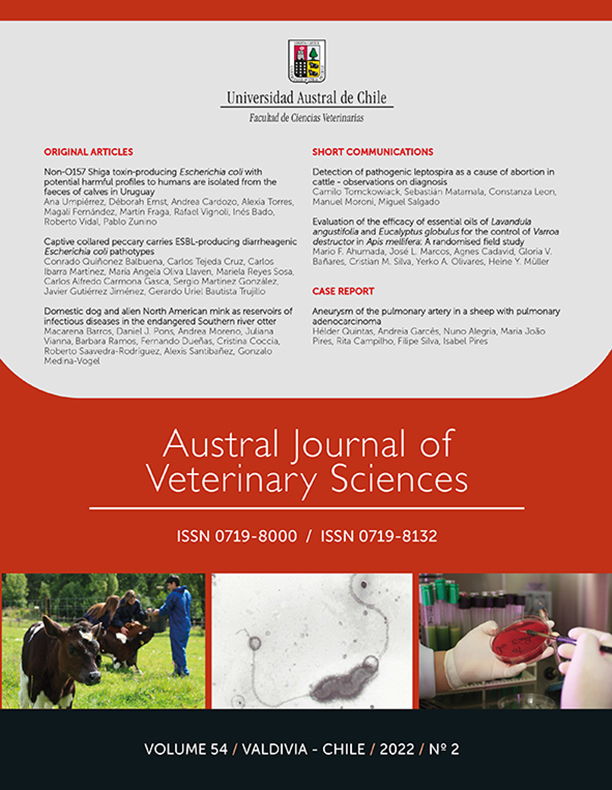Evaluation of the efficacy of essential oils of Lavandula angustifolia and Eucalyptus globulus for the control of Varroa destructor in Apis mellifera: A randomised field study
Contenido principal del artículo
Resumen
Varroa destructor is the most harmful and widespread parasite that spreads disease in bees. Eucalyptus spp essential oils (EOs) have proved effective against V. destructor. Additionally, Lavender spp EOs treatment has caused mite mortality rates of 95% to 97% for the same parasite. In this study, 20 mL of each oil or the placebo were distributed on two sheets of papier-mâché located on the frames of the brood chamber inside each hive. The miticidal effects of Lavandula angustifolia and Eucalyptus globulus EOs were analysed. Parasitic load and mite fall were evaluated under field conditions. The mean infestation rate obtained from each of the three treatment groups at the beginning of the study was less than 3.6%. Then, the infestation rate increased gradually in each group until day 36. The infestation rate in the group treated with L. angustifolia was lower than in the control group by over two per cent and never exceeded 10%; the differences between the control group and the L. angustifolia group were statistically significant (P<0.05). In conclusion, L. angustifolia EO provided effective parasite control starting at the second treatment dose. However, E. globulus EO did not show a consistent parasite control. Further studies should consider the evaluation of EOs for the control of V. destructor in different weather conditions and other treatment delivery systems.

